
How to Use STM8S103F3P6: Examples, Pinouts, and Specs
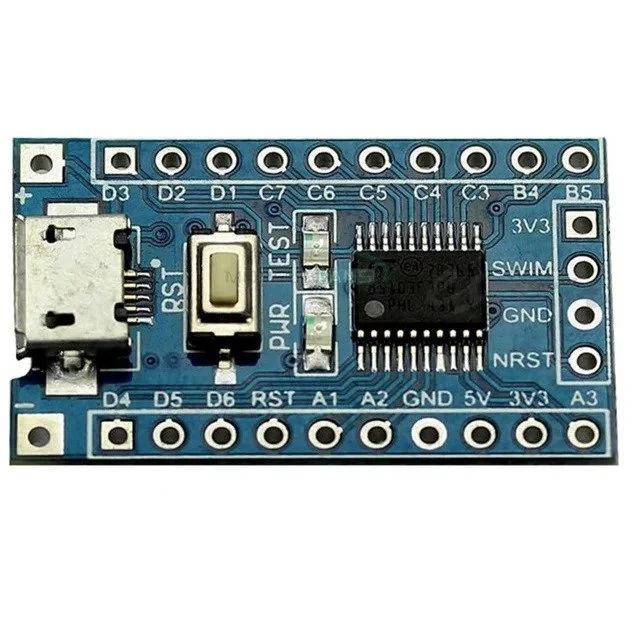
 Design with STM8S103F3P6 in Cirkit Designer
Design with STM8S103F3P6 in Cirkit DesignerIntroduction
The STM8S103F3P6 is a low-power 8-bit microcontroller manufactured by STMicroelectronics. It features an 8-bit CPU core, up to 8 KB of Flash memory, and a variety of integrated peripherals, making it a versatile choice for embedded applications. This microcontroller is designed for cost-sensitive applications while maintaining high performance and reliability.
Explore Projects Built with STM8S103F3P6
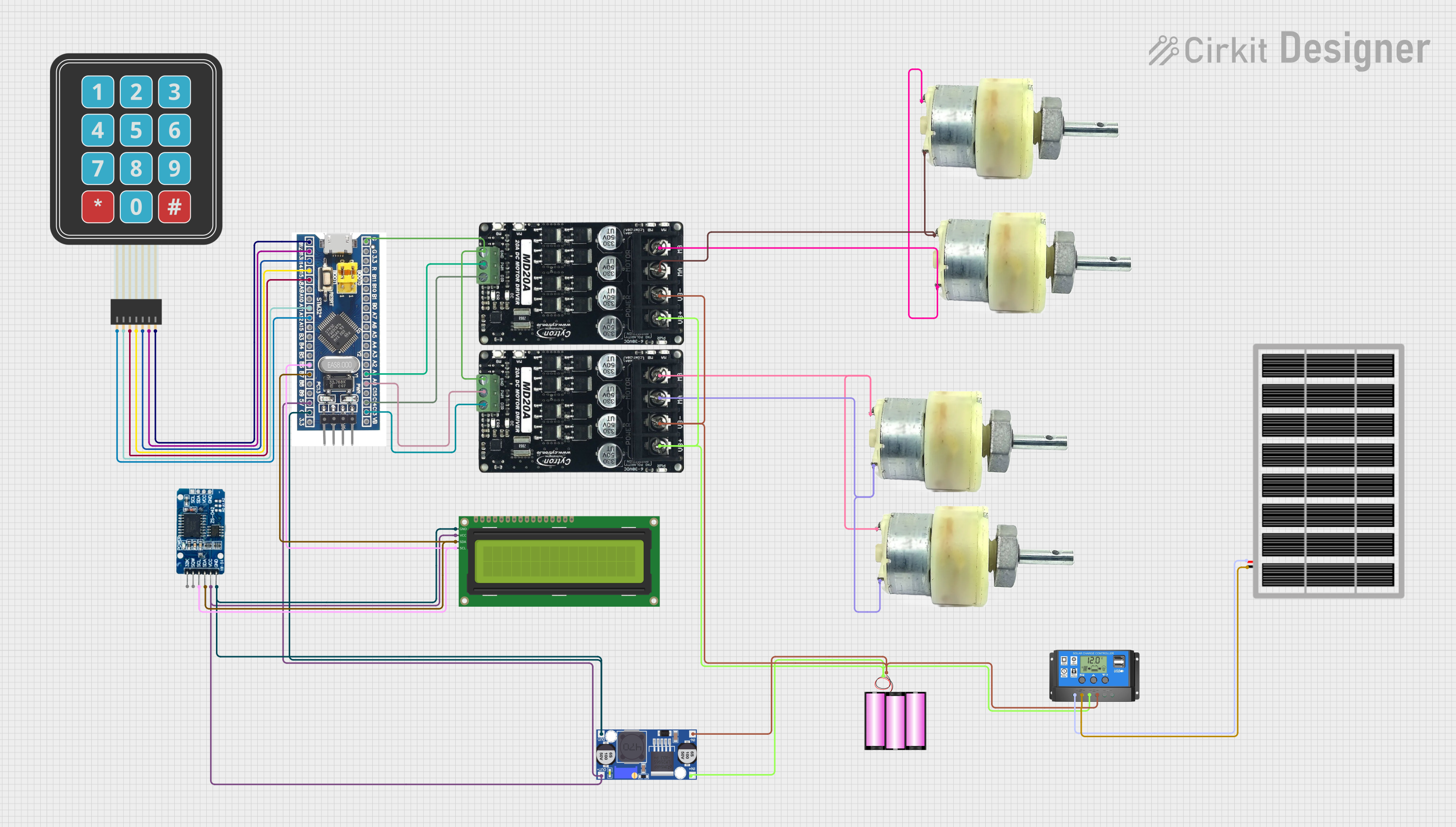
 Open Project in Cirkit Designer
Open Project in Cirkit Designer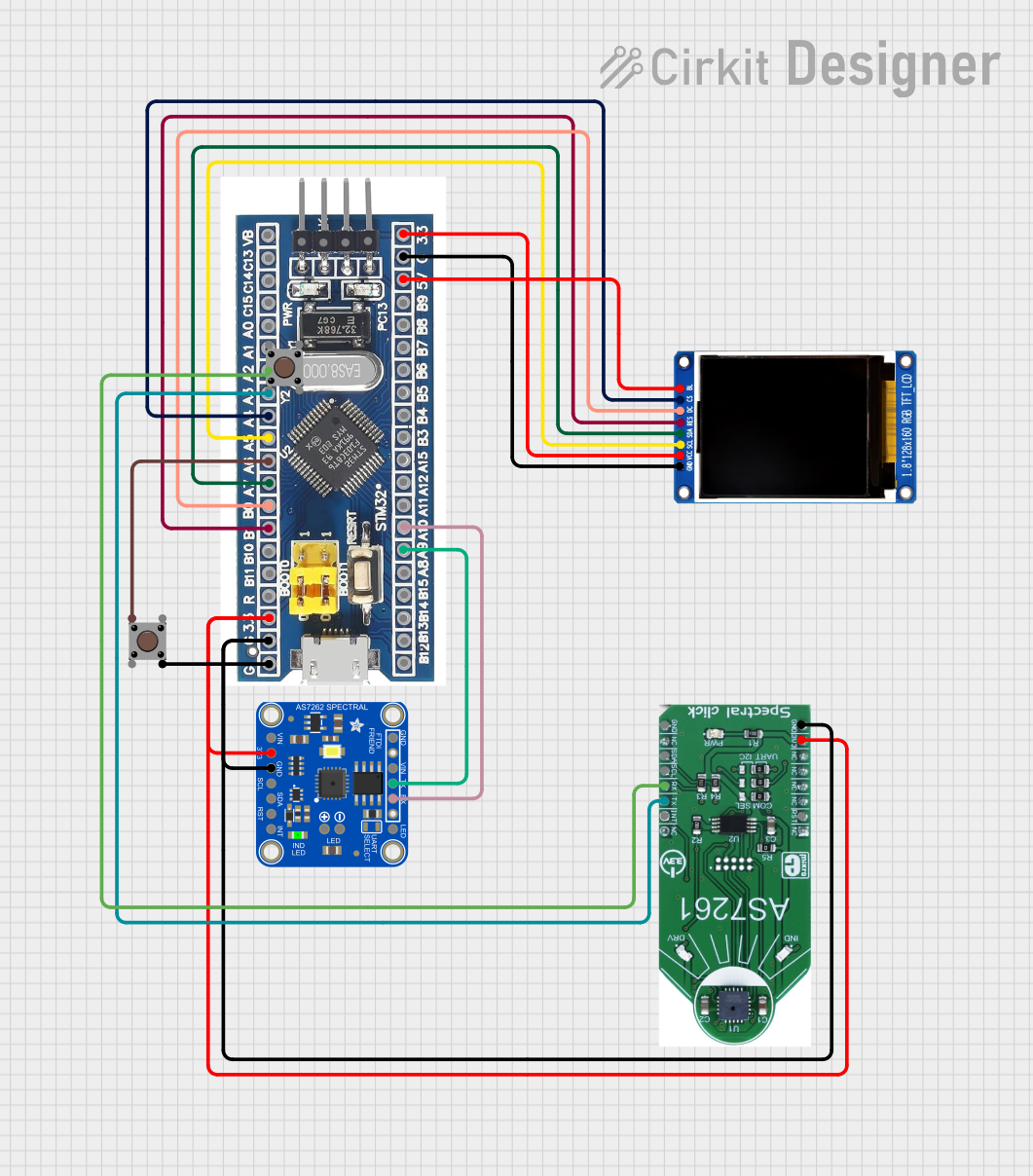
 Open Project in Cirkit Designer
Open Project in Cirkit Designer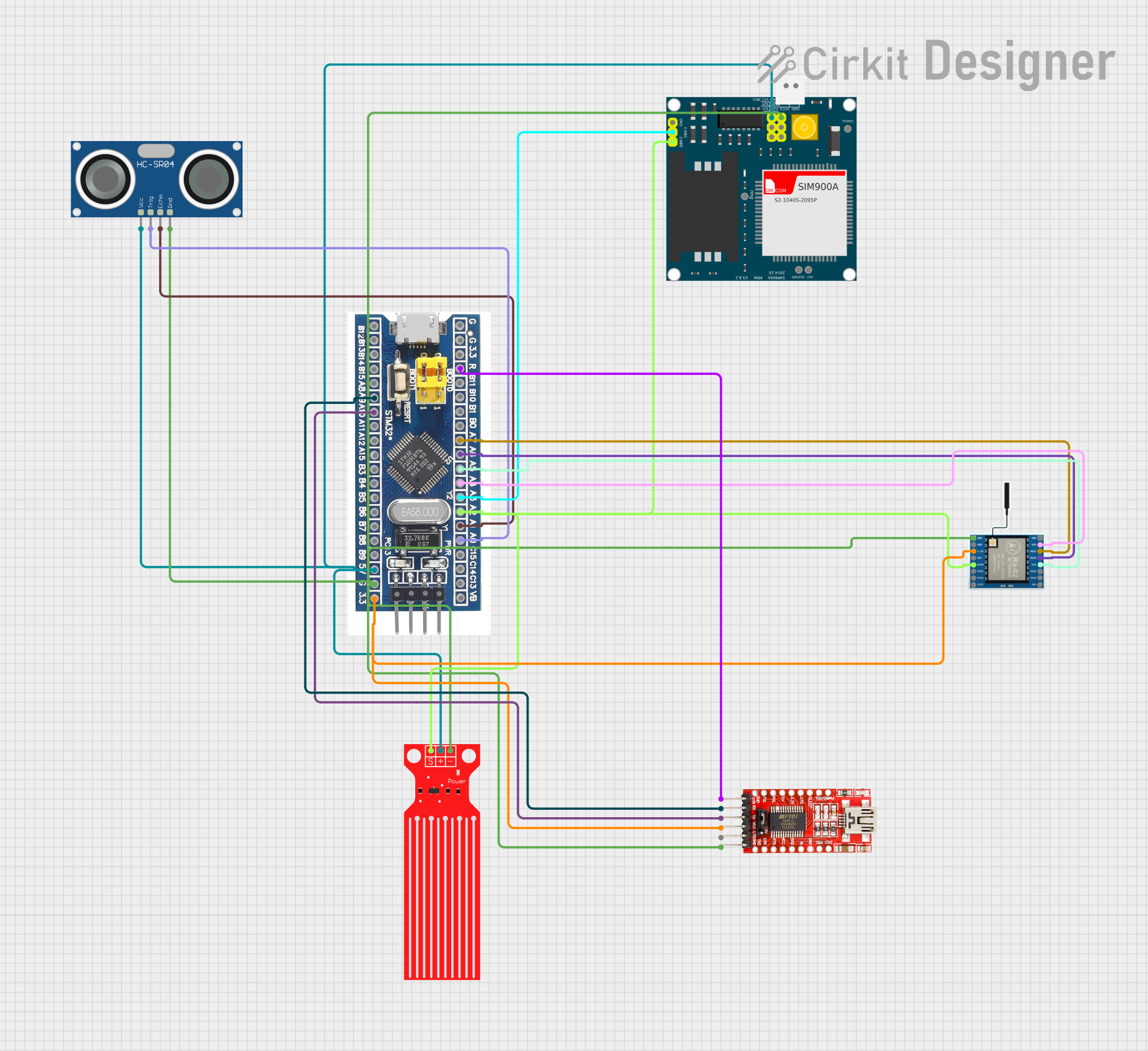
 Open Project in Cirkit Designer
Open Project in Cirkit Designer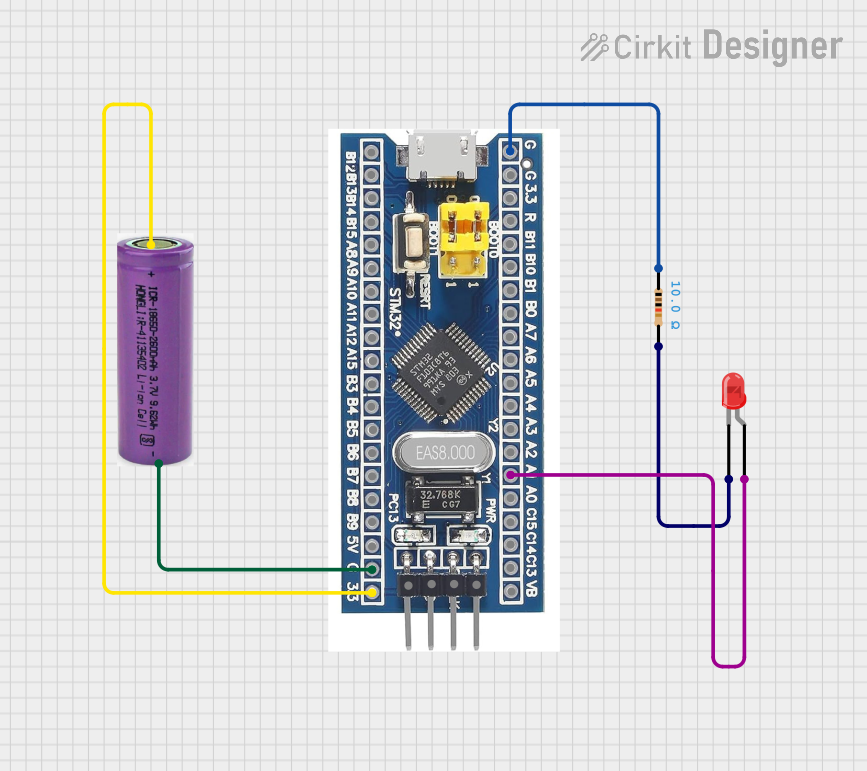
 Open Project in Cirkit Designer
Open Project in Cirkit DesignerExplore Projects Built with STM8S103F3P6

 Open Project in Cirkit Designer
Open Project in Cirkit Designer
 Open Project in Cirkit Designer
Open Project in Cirkit Designer
 Open Project in Cirkit Designer
Open Project in Cirkit Designer
 Open Project in Cirkit Designer
Open Project in Cirkit DesignerCommon Applications and Use Cases
- Home automation systems
- Industrial control systems
- Consumer electronics
- Motor control applications
- IoT devices and sensors
- Educational and prototyping projects
Technical Specifications
The STM8S103F3P6 microcontroller offers a robust set of features suitable for a wide range of applications. Below are its key technical specifications:
Key Features
- Core: STM8 8-bit CPU
- Flash Memory: 8 KB
- RAM: 1 KB
- EEPROM: 640 bytes
- Operating Voltage: 2.95V to 5.5V
- Clock Speed: Up to 16 MHz
- I/O Pins: 16 GPIO pins
- Communication Interfaces: UART, SPI, I²C
- Timers: 3 timers (16-bit and 8-bit)
- ADC: 10-bit ADC with up to 5 channels
- Power Consumption: Low-power modes available
- Package: TSSOP-20
Pin Configuration and Descriptions
The STM8S103F3P6 is available in a 20-pin TSSOP package. Below is the pinout and description:
| Pin Number | Pin Name | Function | Description |
|---|---|---|---|
| 1 | NRST | Reset | Active-low reset input |
| 2 | VSS | Ground | Ground connection |
| 3 | VDD | Power Supply | Positive power supply (2.95V to 5.5V) |
| 4 | PA1 | GPIO / ADC_IN1 | General-purpose I/O or ADC channel 1 |
| 5 | PA2 | GPIO / ADC_IN2 | General-purpose I/O or ADC channel 2 |
| 6 | PA3 | GPIO / ADC_IN3 | General-purpose I/O or ADC channel 3 |
| 7 | PA4 | GPIO / ADC_IN4 | General-purpose I/O or ADC channel 4 |
| 8 | PA5 | GPIO / ADC_IN5 | General-purpose I/O or ADC channel 5 |
| 9 | PB4 | GPIO / I²C_SCL | General-purpose I/O or I²C clock line |
| 10 | PB5 | GPIO / I²C_SDA | General-purpose I/O or I²C data line |
| 11 | PB6 | GPIO / UART_TX | General-purpose I/O or UART transmit |
| 12 | PB7 | GPIO / UART_RX | General-purpose I/O or UART receive |
| 13 | PC3 | GPIO | General-purpose I/O |
| 14 | PC4 | GPIO | General-purpose I/O |
| 15 | PC5 | GPIO | General-purpose I/O |
| 16 | PC6 | GPIO | General-purpose I/O |
| 17 | PC7 | GPIO | General-purpose I/O |
| 18 | PD1 | GPIO | General-purpose I/O |
| 19 | PD2 | GPIO | General-purpose I/O |
| 20 | PD3 | GPIO | General-purpose I/O |
Usage Instructions
The STM8S103F3P6 is a versatile microcontroller that can be used in a variety of embedded systems. Below are the steps and considerations for using this component effectively.
How to Use the STM8S103F3P6 in a Circuit
- Power Supply: Connect the VDD pin to a regulated power source (2.95V to 5.5V) and the VSS pin to ground.
- Reset: Use the NRST pin for resetting the microcontroller. Connect it to a pull-up resistor (typically 10 kΩ) to VDD.
- Clock Configuration: The microcontroller can use an internal RC oscillator or an external crystal oscillator. For precise timing, connect an external crystal to the appropriate pins.
- Programming: Use the SWIM (Single Wire Interface Module) pin for programming and debugging. A compatible ST-Link programmer is required.
- GPIO Configuration: Configure the GPIO pins as input, output, or alternate function using the microcontroller's firmware.
- Peripherals: Utilize the UART, SPI, I²C, ADC, and timers as needed for your application.
Important Considerations and Best Practices
- Decoupling Capacitors: Place a 0.1 µF ceramic capacitor close to the VDD pin to reduce noise and stabilize the power supply.
- Pull-up Resistors: Use pull-up resistors on unused pins to prevent floating inputs.
- Programming Voltage: Ensure the programming voltage matches the microcontroller's operating voltage.
- Low-Power Modes: Use the low-power modes to reduce power consumption in battery-operated applications.
Example: Connecting to an Arduino UNO
The STM8S103F3P6 can communicate with an Arduino UNO via UART. Below is an example Arduino sketch to send data to the STM8S103F3P6:
// Arduino UNO UART Communication with STM8S103F3P6
// Connect Arduino TX (Pin 1) to STM8 RX (PB7)
// Connect Arduino RX (Pin 0) to STM8 TX (PB6)
// Ensure both devices share a common ground
void setup() {
Serial.begin(9600); // Initialize UART at 9600 baud rate
}
void loop() {
Serial.println("Hello, STM8!"); // Send data to STM8
delay(1000); // Wait for 1 second
}
Troubleshooting and FAQs
Common Issues and Solutions
Microcontroller Not Responding
- Cause: Incorrect power supply or missing decoupling capacitor.
- Solution: Verify the power supply voltage and add a 0.1 µF capacitor near the VDD pin.
Programming Failure
- Cause: Incorrect SWIM connection or incompatible programmer.
- Solution: Check the SWIM pin connection and use an ST-Link programmer.
Unstable Operation
- Cause: Noise on the power supply or floating input pins.
- Solution: Add decoupling capacitors and pull-up resistors to unused pins.
UART Communication Issues
- Cause: Mismatched baud rate or incorrect wiring.
- Solution: Ensure the baud rate matches on both devices and verify the TX/RX connections.
FAQs
Q: Can the STM8S103F3P6 operate at 3.3V?
A: Yes, the microcontroller can operate within a voltage range of 2.95V to 5.5V.
Q: What is the maximum clock speed of the STM8S103F3P6?
A: The maximum clock speed is 16 MHz.
Q: How do I program the STM8S103F3P6?
A: Use the SWIM interface with an ST-Link programmer and the ST Visual Programmer (STVP) software.
Q: Does the STM8S103F3P6 support low-power modes?
A: Yes, it supports multiple low-power modes for energy-efficient applications.